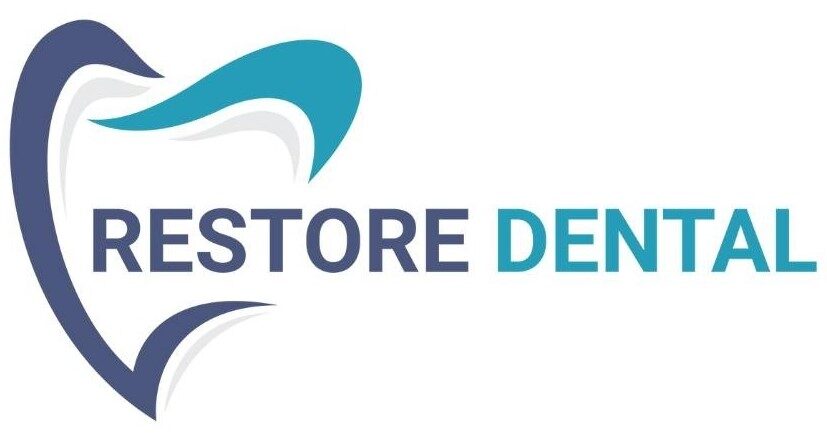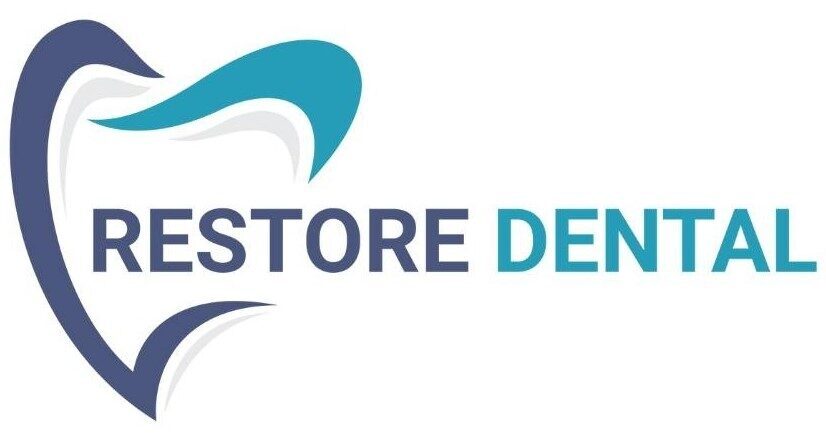Understanding the 4 Stages of TMJ Disorder
Temporomandibular Joint Disorder (TMD), often simply referred to as TMJ, affects the joint that connects your jawbone to your skull. It’s a complex condition that can progress gradually, beginning with minor symptoms and potentially leading to chronic pain and joint dysfunction.
Let’s break down the four clinical stages of TMJ disorder, what you can expect at each stage, and why early diagnosis at a qualified dental clinic in Gurgaon can make all the difference.
Many people don’t realize these symptoms are connected to TMJ, especially if they’ve grown used to the discomfort over time. Our team at Restore Dental is trained in diagnosing TMJ and offering effective treatment options tailored to your needs.
Don’t ignore the signs. Early diagnosis and treatment can improve your daily comfort and help prevent long-term complications. Let Restore Dental help you regain a pain-free smile.
Stage 1: Disc Displacement with Reduction (DDwR) – Early Warning Signs
The first stage of TMJ disorder typically involves disc displacement with reduction, also known as DDwR. In this phase, the cushioning disc inside your TMJ slips out of its normal position when your mouth is closed but returns (or “reduces”) to the proper position when the mouth opens.
Symptoms:
- Occasional clicking or popping sounds in the jaw
- Slight jaw discomfort or tightness
- Temporary deviation of the jaw during opening, which corrects itself
- Normal range of jaw motion after the clicking sound
At this stage, there may be no restriction in jaw movement after the disc realigns. Many patients ignore these early signs, assuming they’re harmless. However, early intervention at this stage can prevent worsening of the condition.
Stage 2: Disc Displacement with Intermittent Locking – Moderate Symptoms Emerge
As the condition progresses to Stage 2, the disc remains displaced in the closed-mouth position and sometimes fails to return to its normal position when the mouth opens. This results in intermittent locking.
Symptoms:
- More frequent and pronounced jaw clicking or popping
- Episodes of temporary jaw locking
- A feeling of hitting an obstruction while opening the mouth
- Pain or discomfort during chewing or yawning
- Headaches or earaches that become more noticeable
Patients often describe this phase as unpredictable — sometimes the jaw opens smoothly, and other times, it gets stuck or pops painfully. This is a clear sign that the condition is progressing and requires evaluation by a specialist.
Stage 3: Disc Displacement Without Reduction (DDwoR) – Chronic Pain and Locking
Stage 3 is marked by disc displacement without reduction, meaning the cushioning disc does not return to its proper position at all. This is often referred to as a “closed lock” and leads to more serious complications.
Symptoms:
- Chronic jaw pain and tightness
- Limited mouth opening (difficulty opening wide)
- Absence of clicking sounds (the disc no longer moves into place)
- Pain spreading to the neck, shoulders, and ears
- Frequent headaches and difficulty speaking or eating
By this point, the jaw’s range of motion becomes significantly limited. The pain is constant and can interfere with daily activities. Treatment becomes more complex and may require multiple approaches.
Stage 4: Disc Degeneration and Joint Damage – Advanced TMJ Disorder
The final stage of TMJ disorder involves advanced joint degeneration. The disc remains permanently out of place, and wear and tear or even perforation of the joint tissues occurs.
Symptoms:
- Intense, unrelenting pain in the jaw and surrounding areas
- Noticeable grinding or grating sounds (crepitus) when moving the jaw
- Severe jaw stiffness and reduced mobility
- Inflammation, swelling, or joint instability
- Development of arthritis in the joint
- Potential need for surgical treatment or joint replacement
In this phase, conservative treatments may not be sufficient. Surgical interventions such as arthroscopy, joint reconstruction, or even total joint replacement may be necessary to restore function and relieve pain.
When Should You See a Dental Specialist?
If you notice symptoms like jaw clicking, locking, pain, or difficulty opening your mouth — especially if they worsen over time — it’s crucial to consult a dentist experienced in TMJ disorders.
A trusted dental clinic in Gurgaon can help you:
- Accurately diagnose your stage of TMJ disorder
- Offer non-invasive treatment options early
- Prevent progression to more painful and damaging stages
Final Thoughts
TMJ disorder is a progressive condition that can start subtly but lead to severe complications if ignored. The good news? Early detection and proper care can prevent permanent damage.
If you’re concerned about jaw discomfort, popping sounds, or any of the symptoms above, don’t wait. Book an evaluation at a reliable Restore Dental Gurgaon to get the relief and guidance you need.
FAQs
01. What are the 4 stages of TMJ disorder?
TMJ disorder typically progresses through four clinical stages:
- Disc Displacement with Reduction (DDwR) – mild clicking/popping.
- Disc Displacement with Intermittent Locking – occasional jaw locking and pain.
- Disc Displacement Without Reduction (DDwoR) – restricted jaw movement and chronic discomfort.
- Joint Degeneration/Arthritis – permanent disc damage, intense pain, and reduced mobility.
02. Is jaw clicking always a sign of TMJ disorder?
Not necessarily. Occasional clicking without pain or restriction isn’t always a cause for concern. However, if the clicking is frequent, painful, or accompanied by locking or limited movement, it may indicate early-stage TMJ disorder and should be evaluated.
03. What does it mean if my jaw locks sometimes but not always?
This may indicate Stage 2: Disc Displacement with Intermittent Locking. The jaw disc is slipping out of place and not always returning smoothly, causing temporary obstruction or “locking” during movement. It’s important to seek care before the locking becomes constant.
04. Can TMJ disorder be reversed in early stages?
Yes. In early stages, TMJ disorder can often be managed or even reversed with:
- Jaw exercises
- Bite correction
- Stress reduction
- Use of a night guard
Timely treatment from a dental specialist can prevent the condition from progressing to more serious stages.
05. What happens if TMJ disorder isn’t treated?
Without treatment, TMJ disorder can worsen over time, leading to:
- Chronic pain
- Limited mouth opening
- Joint inflammation
- Disc damage
- Even arthritis or permanent joint degeneration in severe cases (Stage 4)
06. How do I know which stage of TMJ disorder I’m in?
A thorough clinical evaluation, including jaw movement assessment and imaging (like an MRI), is necessary. A TMJ-focused dental clinic in Gurgaon can identify your specific stage and tailor a treatment plan accordingly.
07. What are some warning signs that TMJ is progressing?
- Clicking turns into locking or stiffness
- Jaw pain becomes chronic
- Difficulty opening your mouth wide
- Sounds disappear but pain increases (disc may no longer move at all)
- Pain radiates to neck, shoulders, or ears
08. Can TMJ disorder cause other problems like headaches or ear pain?
Yes. TMJ disorders often cause:
- Tension headaches
- Earaches or pressure
- Tinnitus (ringing in the ears)
- Facial or neck pain
These symptoms can mimic sinus or neurological issues, which is why accurate diagnosis is important.
09. Are there non-surgical treatments for TMJ disorder?
Absolutely. Most TMJ cases — especially in Stages 1–3 — respond well to:
- Physiotherapy and jaw exercises
- Stress management techniques
- Oral splints/night guards
- Pain relief medications
- Lifestyle changes (like soft diet, posture correction)
10. When is surgery required for TMJ disorder?
Surgery is only considered in Stage 4 or when:
- Joint tissues are severely damaged
- Conservative treatments fail
- There’s extreme joint degeneration or arthritis
Procedures may include arthroscopy, disc repair, or joint replacement.



